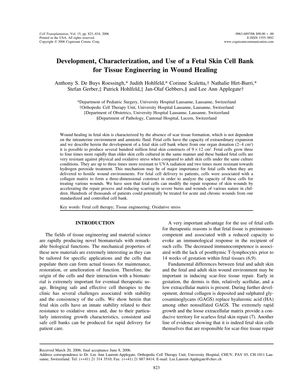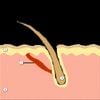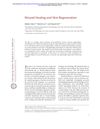Development, Characterization, and Use of a Fetal Skin Cell Bank for Tissue Engineering in Wound Healing
September 2006
in “
Cell Transplantation
”

TLDR Fetal skin cells from a cell bank heal wounds faster and with less scarring than adult cells.
In 2006, researchers successfully developed a fetal skin cell bank that could produce a vast number of skin constructs from a small organ donation. These fetal skin cells grew three to four times faster than adult cells and were significantly more resistant to stress, including UVA radiation and hydrogen peroxide. The study demonstrated the cells' effectiveness in wound healing when used with a collagen matrix, showing accelerated repair and reduced scarring in severe burns and wounds in children. The cell bank was standardized for potential treatment of hundreds of thousands of patients. Clinical applications included successful treatments of a 12-year-old boy with an impalement wound, a newborn with pressure ulcers, and a 10-day-old girl with deep wounds, all showing significant healing without severe complications. The document also mentions the treatment of an 18-month-old boy with second-degree burns. The fetal cells were preimmunocompetent, minimizing the risk of immune response in recipients, and the study concluded that fetal skin cells are a promising option for tissue engineering in wound healing.

